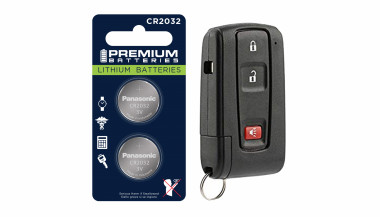When you need a replacement key, taking a clear, detailed photo of your key can make the process much faster and more accurate. A high-quality image helps key makers understand the exact specifications, cuts, and dimensions of your key, which is especially important if you don’t have a spare. In this guide, we’ll walk you through the best practices for photographing your key so you can get an accurate replacement with ease.
Why a Clear Key Photo Matters
Photographing a key might sound simple, but it requires a bit of attention to detail. A well-taken photo captures the key’s grooves and unique cuts clearly, helping the key cutter replicate the exact pattern.
- Saves Time: A high-quality photo reduces the need for multiple attempts to cut a new key.
- Ensures Accuracy: Clear images help capture specific details, leading to a more precise fit.
- Convenient Process: With just a smartphone and a few tips, you can photograph your key from home without needing special equipment.
Essential Tools for Photographing Your Key
To take a clear photo of your key, you don’t need much beyond a few household items. Here’s what you’ll need:
- Smartphone or Camera: A phone camera is usually sufficient, but a standard digital camera works well too.
- Plain Background: Choose a neutral, solid-colored background like a piece of white paper or a smooth table surface.
- Good Lighting: Natural daylight or a bright room light helps capture details without shadows.
- Small Object for Elevation: A coin or similar item can lift the key slightly, making it easier to photograph.
Step-by-Step Guide to Taking the Perfect Key Photo
Follow these steps to take a photo that ensures clarity and accuracy for key replacement.
1. Set Up the Background
Place a piece of plain white paper or another smooth, light-colored surface under your key. The solid color helps the details of the key stand out without any visual distractions.
Tip: Avoid backgrounds with patterns or textures, as these can obscure the key’s features.
2. Position the Key Correctly
Lay the key flat on the background, with the grooves and cuts facing up. The key should be positioned horizontally to allow a clear view of all its details.
- Side Profile: Make sure to capture the side profile that shows the cuts and grooves.
- Elevate Slightly: Place a coin or small object under one end of the key to angle it slightly toward the camera. This can help reduce shadows and improve focus on the cuts.
3. Adjust Lighting
Good lighting is essential for capturing details. If possible, photograph your key in natural daylight near a window or use a well-lit room.
- Avoid Shadows: Ensure that no shadows fall across the key, as they can obscure details.
- Diffuse Light: If using a lamp, consider placing a thin cloth over it to diffuse the light and reduce harsh reflections.
4. Focus and Zoom
Make sure your camera or smartphone is focused directly on the key. You may need to tap the screen to bring it into sharp focus.
- Zoom in Carefully: If you’re using a smartphone, zoom in slightly to capture the details, but avoid over-zooming, which can blur the image.
- Test Multiple Angles: Sometimes a slight adjustment in angle can capture the cuts more effectively, so take a few shots from slightly different perspectives.
5. Capture Multiple Photos
It’s always a good idea to take several photos to ensure you have the best one. Try different angles and lighting adjustments to capture as many details as possible.
- Close-Up of the Grooves: Take one close-up image focusing on the cuts and grooves of the key.
- Overall Image: Include one full-length photo that shows the entire key from end to end.
- Try Different Angles: Slightly tilt the key or move the camera to see which angle best captures the detail of the cuts.
Common Mistakes to Avoid When Photographing Your Key
To get the best results, steer clear of these common issues that can impact the quality of your key photo:
- Blurry Images: If your hand shakes, use a small tripod or prop your phone on a stable surface.
- Poor Lighting: Avoid taking photos in dim rooms; use bright light to ensure the key is clearly visible.
- Obstructed Details: Make sure the entire length of the key is visible, without any part being cut off or covered.
Tips for Ensuring a Smooth Replacement Process
Once you have a clear photo of your key, there are a few final steps to make the replacement process as efficient as possible.
- Check the Photos: Look over your photos before sending them to ensure that they’re clear and detailed.
- Label the Key: If you’re photographing multiple keys, label each one in the image or add a note to avoid confusion.
- Include Measurements: If possible, add the measurements of the key’s length and width in your notes for added accuracy.
A clear, detailed photo of your key can save you time and effort when seeking a replacement. By following these simple steps, you’ll provide all the necessary details to ensure your new key is an accurate match. Remember, good lighting, focus, and capturing all the unique cuts are essential to achieving the best results.
With these guidelines, you’re set to take a photo that will make your key replacement process smooth and hassle-free.


_1736346704.jpg)
 (1)_1736347611.jpg)
_1736342764.jpg)
